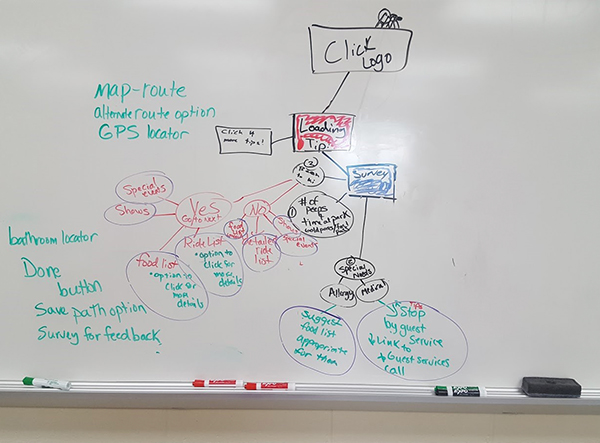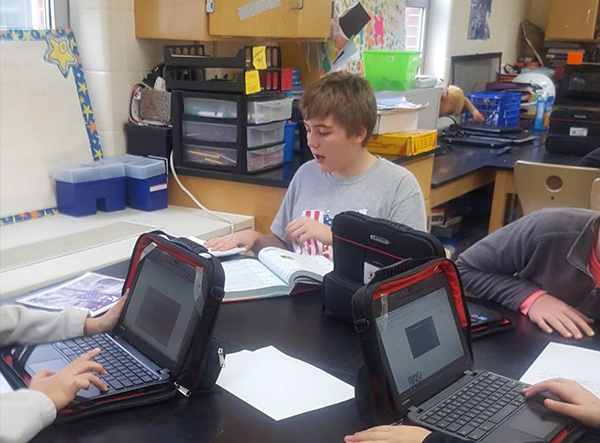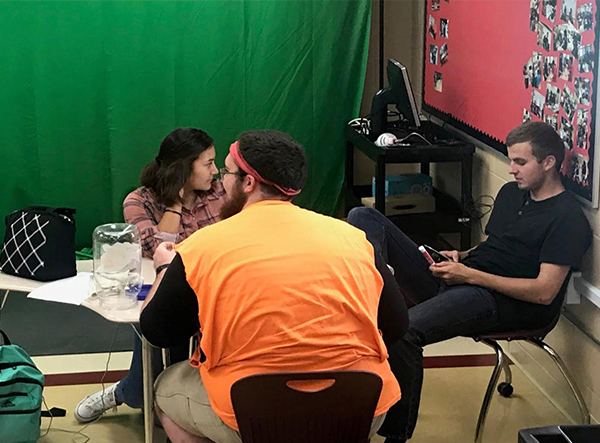How to Prepare Your Gifted Students for Careers in STEM
Teachers of accelerated students are often encouraged to go above and beyond their specialized curriculum. Between district leadership, school administrators, and parents, we have multiple groups to satisfy and impress. We frequently prove classroom success rates with average grades, reviews, and standardized testing results. However, project-based learning activities are another way to illustrate success and help prepare students for careers of the future. ExploraVision fits that need and has been a constant in my classroom for years.
My name is Beth Francis, and I have taught at Felicity Franklin Schools in Felicity, OH for the past 20 years. Our first year participating in the ExploraVision program was actually my first year as the Gifted STEM teacher for grades 3-8. Interestingly enough, we had two 4th grade teams receive honorable mentions that year. That was our hook for future years—gifted students wanted to compete against previous years’ district ExploraVision teams to see how far they could get. Now, that spark turns into momentum as students brainstorm each year.
Team Collaboration and Getting Organized
There are a few steps we follow when starting the competition.
- Do Pre-Research: When we meet as a group for the first time, we look at three years’ worth of past ExploraVision projects. Taking time to review the various winners helps motivate my students to start the project.
- Hold Structured Brainstorms: I lead our class in a few brainstorm sessions where we list out innovative ideas that solve current problems and haven’t been addressed by recent ExploraVision winners. After those fun and vibrant sessions, we select our top contenders. Enthusiastic students will navigate to one of the ideas and thus our groups of 2-4 students form.
- Utilize Digital Tools: I try to infuse technology that not only teaches students computer literacy, but also encourages collaboration. I find cloud-based options, such as Google Slides, help students learn how to build compelling presentations and share responsibility.
These three steps echo what many in STEM careers do when starting new projects. The earlier we can teach students about such processes, the easier it will be for them to adapt for real-world problem solving.

Caption: An exciting whiteboard session for one of our past projects.
Research Guidance for Elementary and Middle School Students
Consuming volumes of scientific information and data meant for adult audiences might seem daunting to children. And while both younger and older students have their challenges with understanding research, I’ve found a few ways to overcome such barriers.
- Younger students: In my younger grades, I make sure to designate a time to meet with each group to ensure the conclusions they’re drawing are aligned with their research. Sometimes eagerness for a fun idea overshadows the facts.
- Older students: Those who have more years of reading comprehension under their belt don’t need such formal check-ins. I encourage them to be independent, verify their sources, and just ask me if they have any questions.

Caption: Younger students learning how to research and comprehend information.
The Bigger Picture on STEM Career Growth
It’s no surprise that classrooms need to incorporate critical thinking skills into their curriculum because students need to be college and career ready. ExploraVision helps bolster higher-level thinking skills that make students more confident. According to the Office of the Under Secretary for Economic Affairs, STEM occupations are projected to grow by 8.9 percent from 2014 to 2024, compared to 6.4 percent growth for non-STEM occupations.
Soft skills, the non-technical skills that help people communicate effectively, are in high demand across the workforce. These skills include: teamwork, problem solving, brainstorming. ExploraVision provides students the opportunity to practice all of those soft skills in addition to the scientific method. Creating a website and video helps my students immensely.

Caption: Older students getting ready to film their project in front of a green screen.
Felicity Franklin Schools’ Past ExploraVision Winners
I’m proud of all my teams. While many do not place, it’s a worthwhile experience for all. In fact, three of my 3rd grade teams won at the regional level from 2016-2018. I hope these innovations inspire your students:
- The Future Fun Box (2016): This is an automatic school supply box that has everything you need for class. All you need to do is ask for it!
- Magic Eardrops (2017): We developed eardrops for people with Autism and auditory sensitivity. Just put drop them in your ear, and it will relax the tympanic membrane, blocking sound.
- Tech Toes (2018): These are self-lacing shoes with a camera, water bottle, biometric sensor, and hologram display. These features ensure efficiency, safety, hydration, and monitoring if needed.
This program, when rolled out effectively, becomes a talking point among school leaders. All of our winners felt like mini celebrities and their parents beamed with pride. We hope this early, positive reinforcement demonstrates the value of pursuing a STEM-based career.
Download these powerful K-12 science lesson plans to get started!
About the Author
Beth Francis has been a passionate science educator for 23 years and spent the last 20 years with Felicity Franklin Schools. She currently serves as a Gifted/STEM teacher. Beth had the opportunity to attend a National Science Teachers Association conference in Columbus, OH and meet other like-minded educators. Learn more about Beth and other ExploraVision ambassadors.